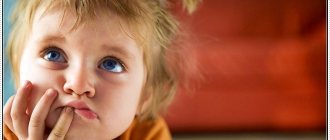For every person, speech is the most important means of communication. The formation of oral speech begins from the earliest periods of a child’s development and includes several stages: from screams and babble to conscious self-expression using various linguistic techniques.
There are such concepts as oral, written, impressive and expressive speech. They characterize the processes of understanding, perceiving and reproducing speech sounds, the formation of phrases that will be spoken or written in the future, as well as the correct arrangement of words in sentences.
Oral and written forms of speech: concept and meaning
Oral expressive speech actively involves the organs of articulation (tongue, palate, teeth, lips). But, by and large, the physical reproduction of sounds is only a consequence of brain activity. Any word, sentence or phrase first represents an idea or image. After their complete formation occurs, the brain sends a signal (order) to the speech apparatus.
Written speech and its types directly depend on how developed the oral form of speech is, since, in essence, it is a visualization of the same signals that the brain dictates. However, the peculiarities of written speech allow a person to more carefully and accurately select words, improve a sentence and correct what was written earlier.
Thanks to this, written speech becomes more literate and correct compared to oral speech. While for oral speech the important indicators are voice timbre, speed of conversation, clarity of sound, intelligibility, written speech is characterized by the clarity of handwriting, its legibility, as well as the arrangement of letters and words in relation to each other.
By studying the processes of oral and written speech, specialists form a general understanding of a person’s condition, possible disorders of his health, as well as their causes. Speech function disorders can be detected both in children with a speech apparatus that has not yet fully formed, and in adults who have suffered a stroke or suffer from other diseases. In the latter case, speech may be fully or partially restored.
Main reasons
Children's age is sensitive to various kinds of influences. Severe pregnancy, childbirth, illness and head injuries will negatively affect its development.
In recent years, the number of children with such pathologies has only been growing. Experts attribute this to various reasons. Some believe environmental degradation plays a role. Others highlight the main risk factors:
- chronic diseases of the father and mother;
- age of women in labor;
- bad habits (alcohol, drugs, smoking);
- trauma during childbirth.
There are also so-called social factors. An increase in the number of smartphones, tablets, 24-hour television. Many cartoons and games for children with advertising easily attract the attention of the baby. Therefore, they lose the need to study and interact with the outside world.
In many cartoons, acid colors and shrill mechanical voices predominate - all this quickly captures the child and his attention. After which he is of little interest in the ordinary speech of an adult.
When communicating with other children and adults, he looks at the face and unconsciously tries to repeat the movements of the organs of articulation. Without such visual contact, it will be difficult for him to make sounds.
Impressive and expressive speech: what is it?
Impressive speech is a mental process that accompanies the understanding of various types of speech (written and oral). Recognition of speech sounds and their perception is a complex mechanism. The most actively involved in it are:
- sensory speech area in the cerebral cortex, also called Wernicke's area;
- auditory analyzer.
Impaired functioning of the latter provokes changes in impressive speech. An example is the impressive speech of deaf people, which is based on recognizing spoken words by lip movements. At the same time, the basis of their written impressive speech is the tactile perception of three-dimensional symbols (dots).
Schematically, Wernicke's area can be described as a kind of card index containing sound images of all words acquired by a person. Throughout his life, a person refers to this data, replenishes and corrects it. As a result of damage to the zone, the sound images of words stored there are destroyed. The result of this process is the inability to recognize the meaning of spoken or written words. Even with excellent hearing, a person does not understand what is being said (or written) to him.
Expressive speech and its types are the process of pronouncing sounds, which can be contrasted with impressive speech (their perception).
Expression and emotions
The concept of “expression” comes from the Latin word “expression” - expression. Not to be confused with espresso, a method of preparing strong coffee. In psychology, expression refers to the process of demonstrating emotions, transmitting them to others, that is, emotional expressiveness.
Emotions reflect a person’s attitude towards the world around him and towards himself. Their centers are located in the ancient subcortical zone of the brain, which explains the connection between our emotional states and various physiological functions of the body. When a person experiences strong feelings, changes occur in the cardiovascular system, digestive, hormonal, etc.
These changes can be visually noticeable, they show what feelings and moods a person is experiencing. For example, we notice the pale skin of a frightened person or reddened cheeks from embarrassment, trembling fingers with excitement or sweat on his forehead, not to mention a smile, laughter and tears. All these are expressive reactions expressing an emotional state.
By the way, they are characteristic not only of humans, but also of higher animals, which indicates the antiquity of expressive movements:
But human expression is not limited to just these, largely reflexive reactions.
The process of forming expressive speech
Starting from the first months of life, the child learns to perceive words addressed to him. Directly expressive speech, that is, the formation of a plan, inner speech and pronunciation of sounds, develops as follows:
- Screams.
- Booming.
- The first syllables are like a type of humming.
- Babble.
- Simple words.
- Words related to the adult vocabulary.
As a rule, the development of expressive speech is closely related to how and how much time parents spend communicating with their child.
Children's vocabulary size, correct sentence production, and formulation of their own thoughts are influenced by everything they hear and see around them. The formation of expressive speech occurs as a result of imitation of the actions of others and the desire to actively communicate with them. Attachment to parents and loved ones becomes the best motivation for a child, stimulating him to expand his vocabulary and emotionally charged verbal communication.
Expressive language impairment is a direct consequence of developmental disabilities, injury or illness. But most deviations from normal speech development can be corrected and regulated.
General information
In speech therapy, this disorder is identified as general speech underdevelopment (GSD). It can be on several levels. As a rule, it is advisable to talk about problems by the age of three. This is a critical period for speech development. If by this time the situation has not improved, then parents should visit specialists.
First of all, they turn to a neurologist. After which it is advisable to listen to a psychiatrist, audiologist (to determine the level of hearing) and only then a speech therapist.
Not every parent knows what exactly is considered developmental delays. By the age of one year, a child should speak 10 words. Usually they are simple “mom”, “dad”, “give”, etc. The use of onomatopoeia “ava”, “kisa”, “bibi”, etc. is allowed.
By two years, the active vocabulary already consists of 200 words, there is a simple phrase “I eat”, “give Masha”, etc. By three years the figure increases to 800 words, parts of speech, prepositions and some sounds appear.
Speech continues to develop even after three years. Therefore, if it begins to seriously lag behind the norm, it will be difficult to catch up. Problems with speech are fraught with disruption of all other mental functions:
- memory;
- thinking;
- attention, etc.
If a child at three years old has no words or only 2-3, parents should worry and start acting.
How are speech development disorders identified?
Speech therapists examine the speech function of children, conduct tests and analyze the information received. The study of expressive speech is carried out in order to identify the child’s formed grammatical structure of speech, to study vocabulary and sound pronunciation. It is for the study of sound pronunciation, its pathologies and their causes, as well as for the development of a procedure for correcting violations, that the following indicators are studied:
- Pronunciation of sounds.
- The syllabic structure of words.
- Level of phonetic perception.
When starting an examination, a qualified speech therapist clearly understands what exactly the goal is, that is, what kind of expressive speech disorder he should identify. The work of a professional includes specific knowledge about how the examination is carried out, what type of materials should be used, as well as how to formalize the results and form conclusions.
Taking into account the psychological characteristics of children whose age is preschool (up to seven years), the process of examining them often includes several stages. At each of them, special bright and attractive visual materials for the named age are used.
Expression
Expression (from Latin expressio “expression”):
Wiktionary has an entry for "expression"
Wiktionary has an entry for "expressiveness"
“What an expression!” - an art connoisseur will exhale in admiration, looking at the artist’s painting. “Very expressive girl!” - a person will say about his interlocutor, who is emotionally talking about an event that excited her. What is expression? This concept is found in art and medicine, in biology and psychology. We use it when we talk about something bright, dynamic and very emotional.
Sequence of the examination process
Thanks to the correct formulation of the examination process, it is possible to identify various skills and abilities by studying one type of activity. This organization allows you to fill out more than one item on the speech card at one time over a short period of time. An example is a speech therapist’s request to tell a fairy tale. The objects of his attention are:
- pronunciation of sounds;
- diction;
- skills in using the vocal apparatus;
- the type and complexity of sentences used by the child.
The information received is analyzed, summarized and entered into certain graphs of speech cards. Such examinations can be individual or carried out for several children at the same time (two or three).
The expressive side of children's speech is studied as follows:
- Studying the volume of vocabulary.
- Observation of word formation.
- Study of the pronunciation of sounds.
Also of great importance is the analysis of impressive speech, which includes the study of phonemic awareness, as well as monitoring the understanding of words, sentences and text.
The influence of expressive speech delay on the development of Communication at an early age
Children with late development of independent speech, due to physiological reasons, are not accustomed to thinking logically from childhood. Without speech therapy classes at school age, they will make gross syntactic errors when writing from dictation.
There may also be problems with adequate interpretation of abstract images and concepts, which will make it difficult to build interpersonal relationships.
After the first signs of independent thinking appear, children should stimulate their cognitive interest and constantly expand their vocabulary.
If you have problems with verbal expression, it is recommended to play role-playing games together, learn basic phrases of daily etiquette, so that communication with peers is psychologically comfortable.
Causes of expressive speech disorders
It should be noted that communication between parents and children who have an expressive language disorder cannot be the cause of the disorder. It affects exclusively the pace and general nature of the development of speech skills.
No specialist can say unequivocally about the reasons leading to the occurrence of child speech disorders. There are several factors, the combination of which increases the likelihood of detecting such deviations:
- Genetic predisposition. The presence of expressive speech disorders in one of your close relatives.
- The kinetic component is closely related to the neuropsychological mechanism of the disorder.
- In the vast majority of cases, impaired expressive speech is associated with insufficient formation of spatial speech (namely, the area of the parietal temporo-occipital junction). This becomes possible with the left hemisphere localization of speech centers, as well as with dysfunction in the left hemisphere.
- Insufficient development of neural connections, accompanying organic damage to the areas of the cortex responsible for speech (usually in right-handed people).
- Unfavorable social environment: people whose level of speech development is very low. Expressive speech in children who are in constant contact with such people may have deviations.
When establishing the probable causes of speech disorders, one should not exclude the possibility of abnormalities in the functioning of the hearing aid, various mental disorders, congenital malformations of the organs of articulation and other diseases.
As has already been proven, full-fledged expressive speech can be developed only in those children who are able to correctly imitate the sounds they hear. Therefore, timely examination of hearing and speech organs is extremely important. In addition to the above, the causes may be infectious diseases, insufficient development of the brain, brain trauma, tumor processes (pressure on brain structures), hemorrhage in the brain tissue.
What types of expressive speech disorders occur?
Among expressive speech disorders, the most common is dysarthria - the inability to use the speech organs (tongue paralysis). Its frequent manifestations are chanted speech. Manifestations of aphasia, a disorder of speech function that has already formed, are also not uncommon. Its peculiarity is the preservation of the articulatory apparatus and full hearing, but the ability to actively use speech is lost.
There are three possible forms of expressive language disorder (motor aphasia):
- Afferent. It is observed if the postcentral parts of the dominant cerebral hemisphere become damaged. They provide the kinesthetic basis necessary for full movements of the articulation apparatus. Therefore, it becomes impossible to voice some sounds. Such a person cannot pronounce letters that are similar in their method of formation: for example, sibilant or prelingual. The consequence is a violation of all types of oral speech: automated, spontaneous, repeated, naming. In addition, there are difficulties with reading and writing.
- Efferent. Occurs when the lower parts of the premotor area are damaged. It is also called Broca's area. With this disorder, the articulation of specific sounds does not suffer (as with afferent aphasia). For such people, switching between different speech units (sounds and words) causes difficulty. While clearly pronouncing individual speech sounds, a person cannot pronounce a series of sounds or a phrase. Instead of productive speech, perseveration or (in some cases) speech embolus is observed.
It is worth mentioning separately such a feature of efferent aphasia as the telegraphic style of speech. Its manifestations are the exclusion of verbs from the dictionary and the predominance of nouns. Involuntary, automated speech and singing may be preserved. The functions of reading, writing and naming verbs are impaired.
- Dynamic. It is observed when the prefrontal regions, the areas in front of Broca's area, are affected. The main manifestation of such a disorder is a disorder affecting active voluntary productive speech. However, reproductive speech (repeated, automated) is preserved. For such a person, expressing thoughts and asking questions is difficult, but articulating sounds, repeating individual words and sentences, and answering questions correctly are not difficult.
A distinctive feature of all types of motor aphasia is the person’s understanding of the speech addressed to him, the completion of all tasks, but the impossibility of repetition or independent expression. Speech with obvious defects is also common.
Agraphia as a separate manifestation of expressive language disorder
Agraphia is the loss of the ability to write correctly, which is accompanied by preservation of motor function of the hands. It occurs as a consequence of damage to the secondary associative fields of the cortex of the left hemisphere of the brain.
This disorder becomes concomitant with oral speech disorders and is extremely rarely observed as a separate disease. Agraphia is a sign of a certain type of aphasia. As an example, we can cite the connection between damage to the premotor area and a disorder of the unified kinetic structure of writing.
In the case of minor damage, a person suffering from agraphia may correctly write specific letters, but may misspell syllables and words. It is likely that there are inert stereotypes and a violation of the sound-letter analysis of the composition of words. Therefore, such people find it difficult to reproduce the required order of letters in words. They may repeat individual actions several times that disrupt the overall writing process.
Alternative interpretation of the term
The term “expressive speech” refers not only to the types of speech and the features of its formation from the point of view of neurolinguistics. It is the definition of the category of styles in the Russian language.
Expressive styles of speech exist in parallel with functional ones. The latter include bookish and conversational. Written forms of speech are journalistic style, official business and scientific. They belong to book functional styles. Conversational is represented by the oral form of speech.
Means of expressive speech increase its expressiveness and are designed to enhance the impact on the listener or reader.
The word “expression” itself means “expressiveness”. The elements of such vocabulary are words designed to increase the degree of expressiveness of oral or written speech. Often, several expressive synonyms can be selected for one neutral word. They may vary depending on the degree of emotional stress. There are also often cases when for one neutral word there is a whole set of synonyms that have exactly the opposite connotation.
The expressive coloring of speech can have a rich range of different stylistic shades. Dictionaries include special symbols and notes to identify such synonyms:
- solemn, high;
- rhetorical;
- poetic;
- humorous;
- ironic;
- familiar;
- disapproving;
- dismissive;
- contemptuous;
- derogatory;
- sulgaric;
- abusive.
The use of expressively colored words must be appropriate and competent. Otherwise, the meaning of the statement may be distorted or take on a comical sound.
EXPRESSIVENESS
EXPRESSIVENESS
(literally “expressiveness”, from Latin expressio “expression”), a property of a certain set of linguistic units that ensures their ability to convey the speaker’s subjective attitude to the content or addressee of speech, as well as a set of qualities of speech or text organized on the basis of such linguistic units.
Also on the topic:
LINGUISTICS (LANGUAGE, LINGUISTICS)
The phenomenon of expressiveness is based on several groups of psychological laws relating, on the one hand, to the expression of emotions and feelings, and on the other, to perception (this includes, first of all, the opposition of figure and ground as one of the main conditions of perception). The linguistic mechanism of expressiveness is mainly a deviation from stereotypes in the use of linguistic units of various levels.
The emergence of expressiveness as a characteristic of speech or text is influenced by the properties of the communicative situation: the intentions of the speaker/writer, the presumptions of the reader/listener (i.e., the initial knowledge and ideas with which he enters into communication), as well as the linguistic and extralinguistic (social) context of the communicative act.
Language units are divided into system-linguistic carriers of expressiveness and system-neutral units (i.e., words and expressions that in themselves are not carriers of expressivity, but can take on this function under certain conditions. Moreover, in creating expressiveness of speech or text, the leading role is played not so much by the expressive potential of the language unit of the appropriate level inherent in the system, but by the characteristics of the communicative situation, primarily the context. The discrepancy between the intentions of the speaker/writer and the presumptions of the reader/listener can also act as an additional means of increasing expressiveness.
So, depending on the nature of the linguistic units used in the communicative act and the characteristics of the communicative situation, the following four types of expressiveness can be distinguished:
a) system-linguistic carriers of expressiveness are used in an expressive context - intra-system (or inherent, dictionary, paradigmatic, stock) expressiveness is realized;
b) system-neutral units acquire the property of expressiveness in an expressive context - contextual (or adherent syntagmatic, acquired) expressiveness is realized;
c) systemic language carriers of expressiveness are used in a neutral context - a contextual loss of expressiveness occurs (or pseudo-expressiveness);
d) system-neutral units are used in a neutral context – zero expressiveness is realized.
The boundaries between these cases are not rigid. Thus, repeated use of system-neutral units in an expressive context can lead to their becoming system-expressive. There may be cases when, on the contrary, expressiveness is lost due to the very high frequency of use of systemic expressive means in an expressive context. The expression of such a context becomes “hackneyed” and “erased.”
Expressiveness constitutes the main part of the connotative meaning of linguistic units, without being part of their denotative content.
Expressiveness is associated with a number of linguistic categories of a complex and multi-level nature like itself. The closest relationship between expressiveness and emotionality; sometimes even these concepts are used as synonyms or their distinction seems unprincipled (O.S. Akhmanova, R.A. Budagov, V.G. Gak, A.N. Gvozdev, V.A. Zvegintsev, etc.). Meanwhile, these two categories are in a relationship of intersection: the common part of their content is a wide range of emotional expressiveness, and the non-overlapping areas are the components of denotative content associated with the transmission of emotions, on the one hand, and unemotional, “logical” expressivity, on the other. Expressiveness is also associated with emphasis and intensification, evaluativeness, persuasiveness (the ability of expression to have an impact on the reader/listener), with imagery and figurativeness.
The general task of expressiveness is to express or stimulate a subjective attitude towards what is being said. On the part of the speaker/writer, this is strengthening, highlighting, emphasizing the statement, deviating from the speech standard, norm, expressing feelings, emotions and moods, endowing the statement with emotional force, evaluating, achieving imagery and creating an aesthetic effect. On the part of the reader/listener, this is maintaining and strengthening attention, increasing reflection, and the emergence of emotions and feelings.
The degree of expressiveness (sometimes identified with the degree of intensity) serves as one of the distinguishing features for functional varieties of language. Functional varieties that are highly expressive include the language of fiction, colloquial speech and journalism, as well as the language of advertising. Functional varieties that are characterized by low expressiveness include the language of science and technology, as well as formal business language.
Systemic-linguistic (or paradigmatic) means of expressiveness are found at all levels of language. Phonological and prosodic means of achieving expressiveness include, in particular, the duration of the sound ( Let it go
!), sound writing (
Ting
!
- the phone rang quietly
) and alliteration (
four little black little devils
), accentuation (
Doing this is fair
?!
You need to be more careful, guys
), special rhythmic and intonation structures, etc. The use of most of these means can affect letter.
Sometimes in written speech, graphic and paragrapheme signs are the main carriers of expressiveness. Rhythm as a carrier of expressiveness is especially widely represented in idioms and poetic works ( Finished the job - walk boldly
).
The morphological means of intralingual expressiveness include a wide arsenal of expressive morphemes, primarily diminutive (diminutive, caressing) and augmentative (increasing, coarsening) suffixes - respectively, suffixes -k-
,
-ik
,
-ishk-
,
-echk-
,
-ochk-
,
-chok
,
-ul'-
,
-us'-
and the suffixes
-il-
,
-in-
,
-ish-
,
-uh-
,
-oh-
,
-yah-
, etc.).
Affix-free word formation methods can also create an expressive effect - as, for example, in verbal nouns top, clap, slap
.
Lexical carriers of expressiveness include various groups of expressive vocabulary, as well as tropes (metaphor, metonymy, hyperbole, litotes, etc.). Some of the expressive lexemes have one-word neutral (not stylistically colored) correspondences, some correspond to neutral descriptive expressions of several words ( rush - run, hard worker - worker,
but
to chatter is to speak very quickly
).
At the lexical level, a distinction is made between quantitative ( tiny, pigalitsa, pygmy, fat
) and qualitative (
buldo, clunker, raunchier, heaped up, tossing
) expressiveness.
Syntactic means of expressiveness include typified modifications of structural syntactic units that have expressive meaning. These are amplification, non-union and multi-conjunction, change in word order, parallel syntactic constructions, syntactic repetitions, ellipsis, etc. A special group of typified modifications consists of rhetorical figures (anapodoton, enjambeman, homeotelevton, zeugma, chiasmus, enallaga, epimone, etc.) and some violations of syntactic structure (aposiopesis - breakage and anacoluth).
Units of text structure can also be carriers of expressiveness. These are variations in the form of narration (first person, impersonal narration, etc.), anaphorics, parallelism in the structure of different parts of the text, etc.
Along with systemic linguistic ones, paralinguistic means are used to create expressiveness: facial expressions and pantomime (gestures), volume and timbre of voice in oral speech and iconic means (pictograms, drawings) in written texts.
Elements of the theory of expressiveness in linguistics appeared at the end of the 19th century. in the works of A.A. Potebnya and J. Vandries. These researchers linked expressivity to affectivity. Later, K. O. Erdman identified “secondary meaning” as an additional component of the meaning of the word, corresponding to the modern idea of expressiveness. Particular interest in expressiveness arose in the mid-20th century. (monographs by Sh. Bally, Y. Zima, V.A. Zvegintsev, A.I. Efimov, articles by E.M. Galkina-Fedoruk, L.M. Vasiliev and other researchers, in which the theoretical understanding of the category of expressiveness was continued).
In modern Russian linguistics, there are two main approaches to the study of expressiveness: functional-stylistic or speech science (M.N. Kozhina, N.M. Pavlova, T.G. Khazagerov, etc.) and semantic (L.M. Vasiliev, N. A. Lukyanova, T.V. Matveeva, V.N. Telia, etc.). There is also a point of view that expressiveness, due to the blurring of its boundaries, should be replaced by a more clearly defined linguistic category (V.D. Devkin).
From the prospects for further research on expressiveness, we can point to a detailed description of the arsenal of expressive means at each level of language. Serious work in this direction is already underway (cf. monographs by N.A. Lukyanova, A.P. Skovorodnikov, T.V. Matveeva). An inventory of the most typical cases of implementation of contextual expressiveness is also necessary. This task becomes feasible with the use of modern computer technologies. There are different opinions regarding the prospects for cross-level description of means of expression. Some researchers see it as unpromising (Yu.M. Skrebnev). However, if we take into account the modern tendency to identify new research disciplines at the intersection of traditional sciences, we can assume the emergence of a broader discipline that goes beyond the interlevel description of language - expressology, the task of which could be the integration of the results of research on expressivity in linguistics, psycholinguistics, literary criticism and poetics, art criticism, psychology, biology and genetics (in the latter, expressiveness means the severity of a characteristic, the carrier of which is a certain gene).
Leon Ivanov
Expressive speech styles
Representatives of modern science of language classify the following styles as:
- Solemn.
- Familiar.
- Official.
- Jocular.
- Intimately affectionate.
- Mocking.
The contrast to all these styles is neutral, which is completely devoid of any expression.
Emotionally expressive speech actively uses three types of evaluative vocabulary as an effective means of helping to achieve the desired expressive coloring:
- The use of words that have a clear evaluative meaning. This should include words that characterize someone. Also in this category are words that evaluate facts, phenomena, signs and actions.
- Words with significant meaning. Their main meaning is often neutral, however, when used in a metaphorical sense, they acquire a rather bright emotional connotation.
- Suffixes, the use of which with neutral words allows you to convey a variety of shades of emotions and feelings.
In addition, the generally accepted meaning of words and the associations attached to them have a direct impact on their emotional and expressive coloring.









